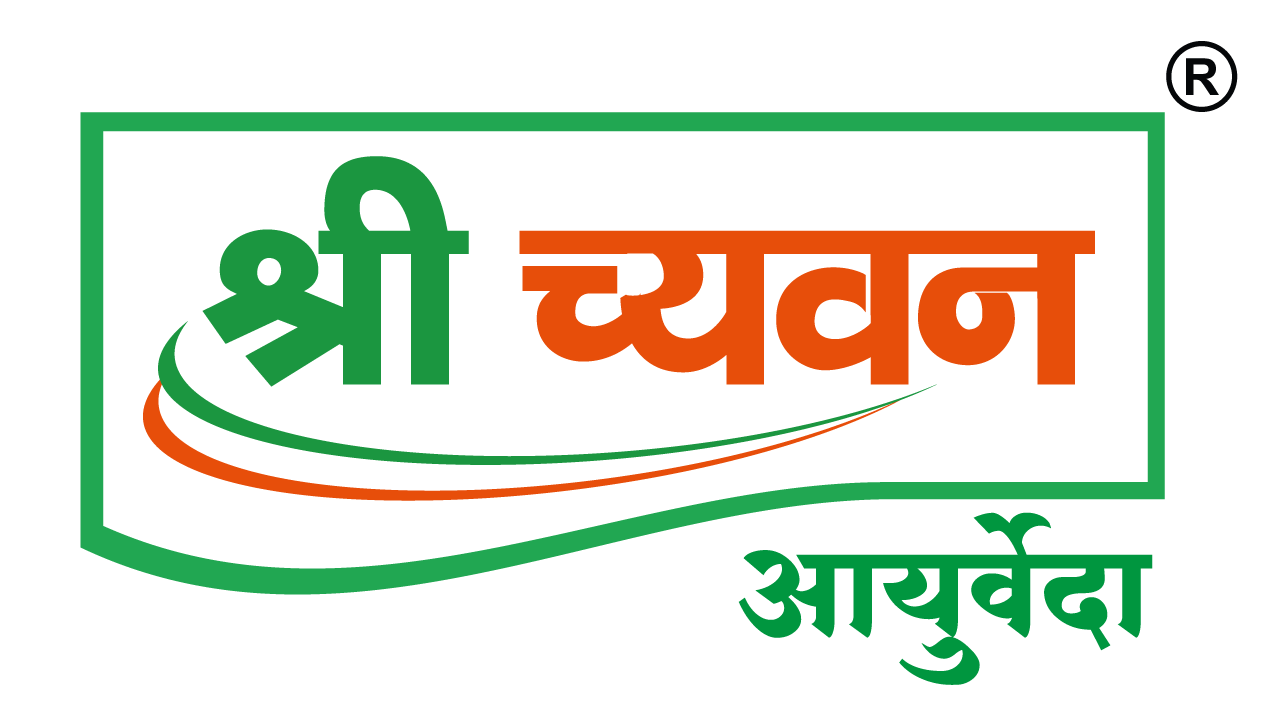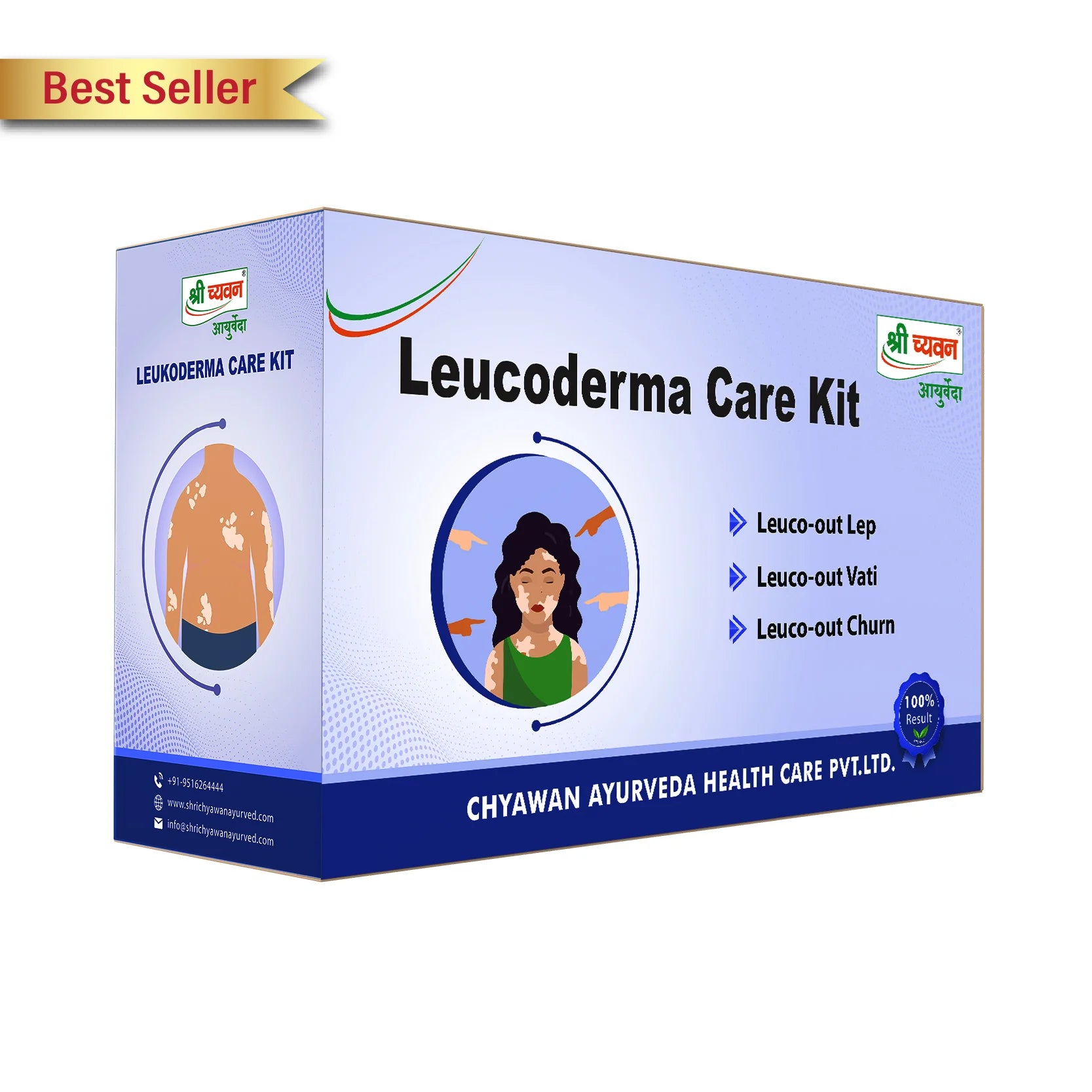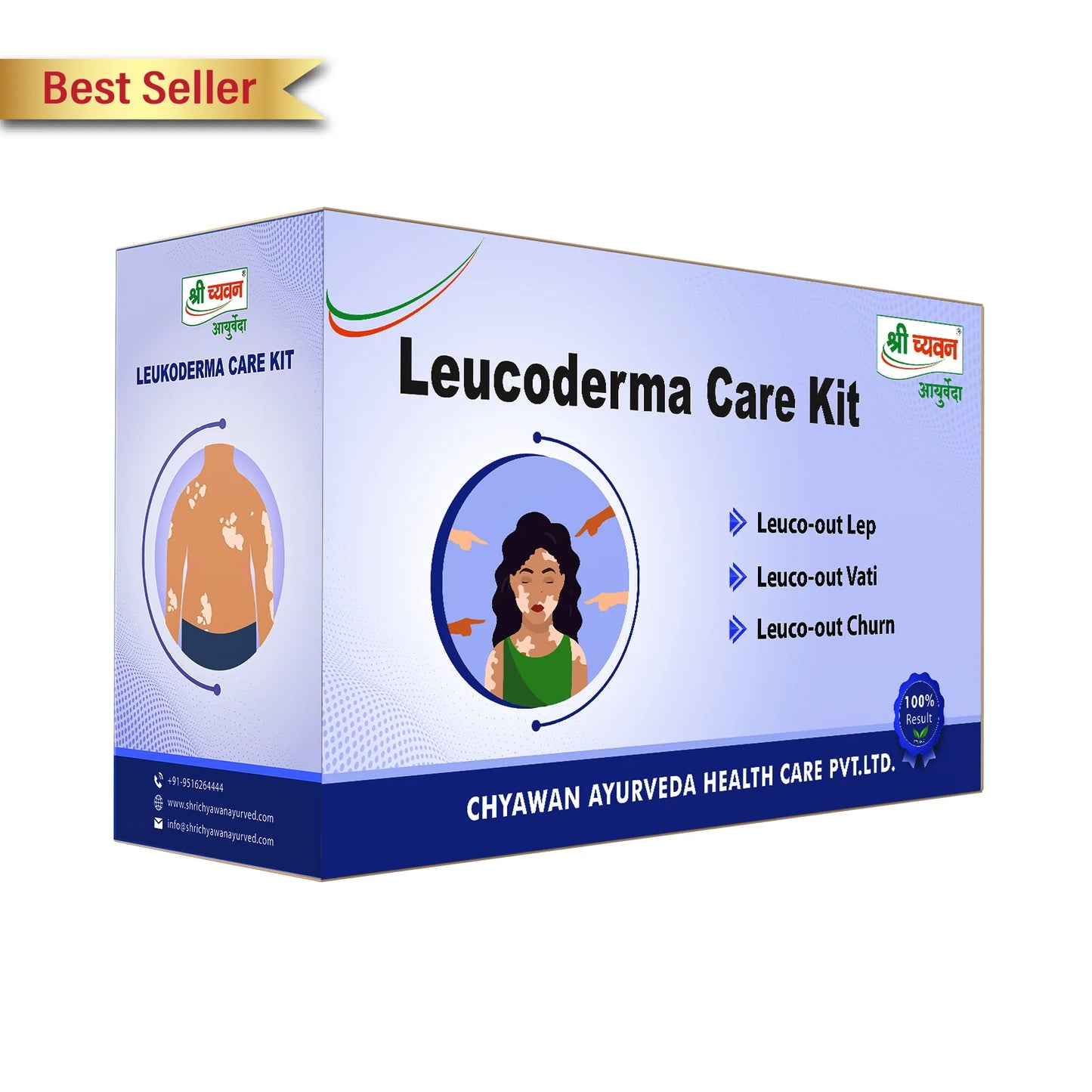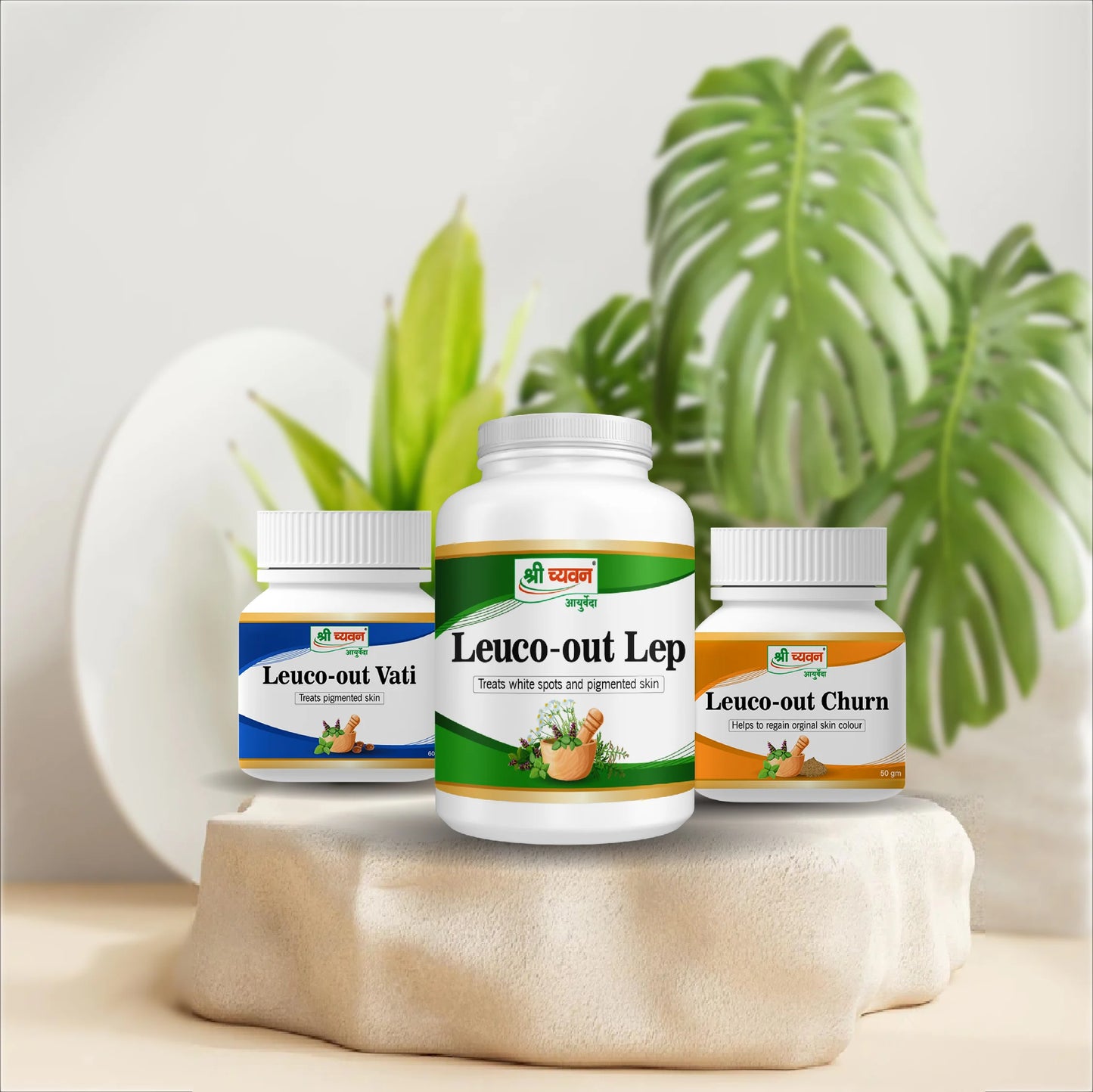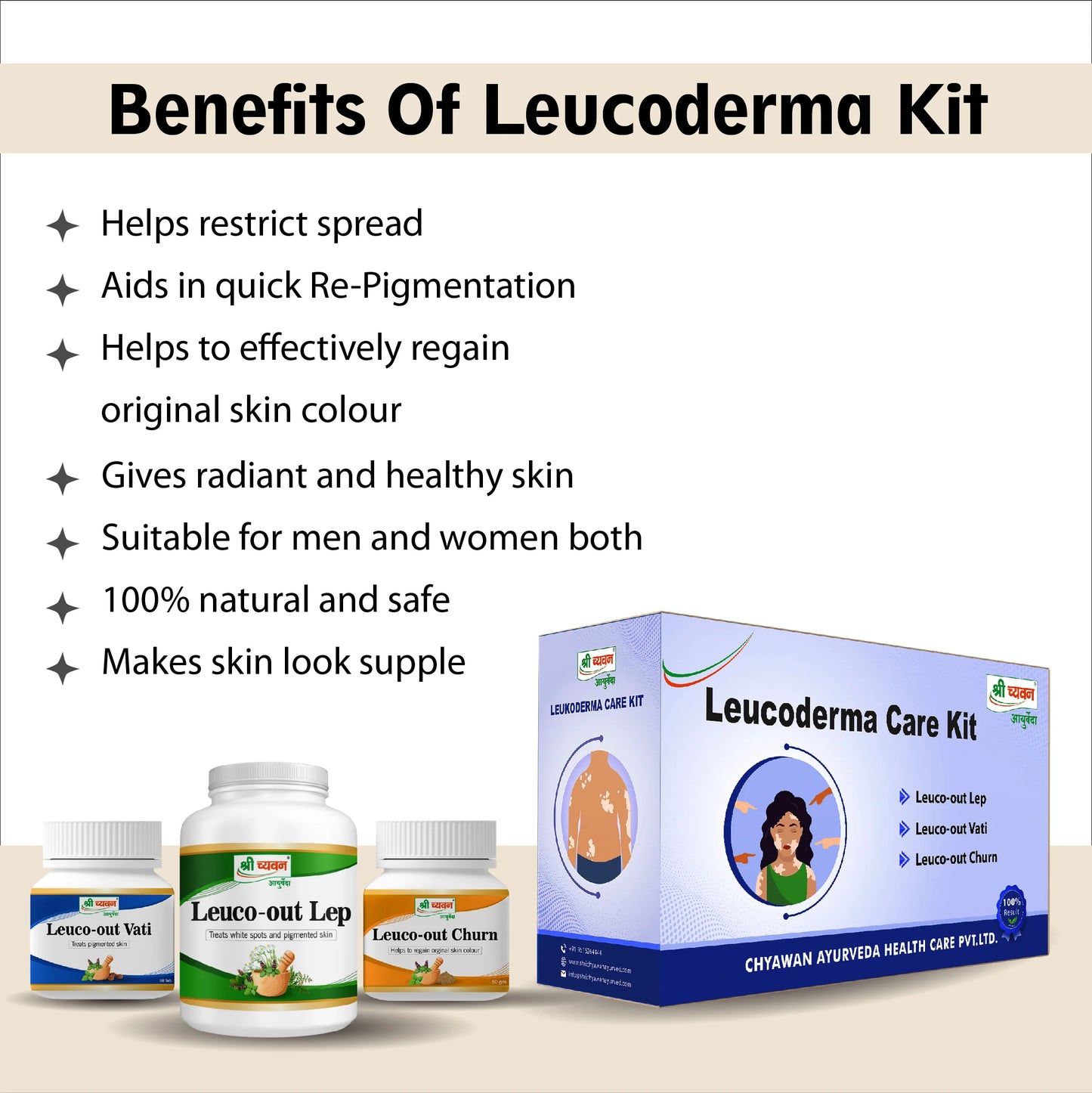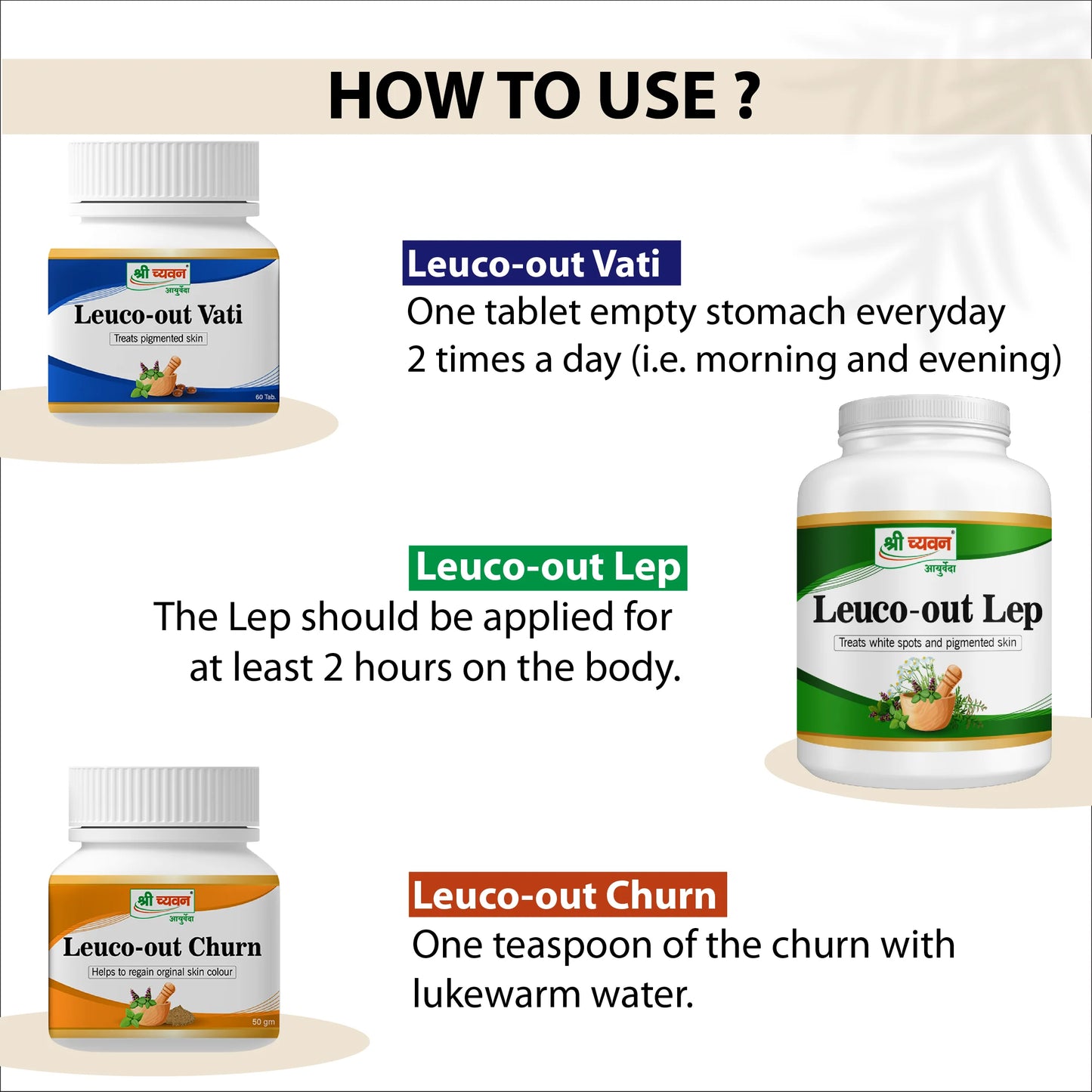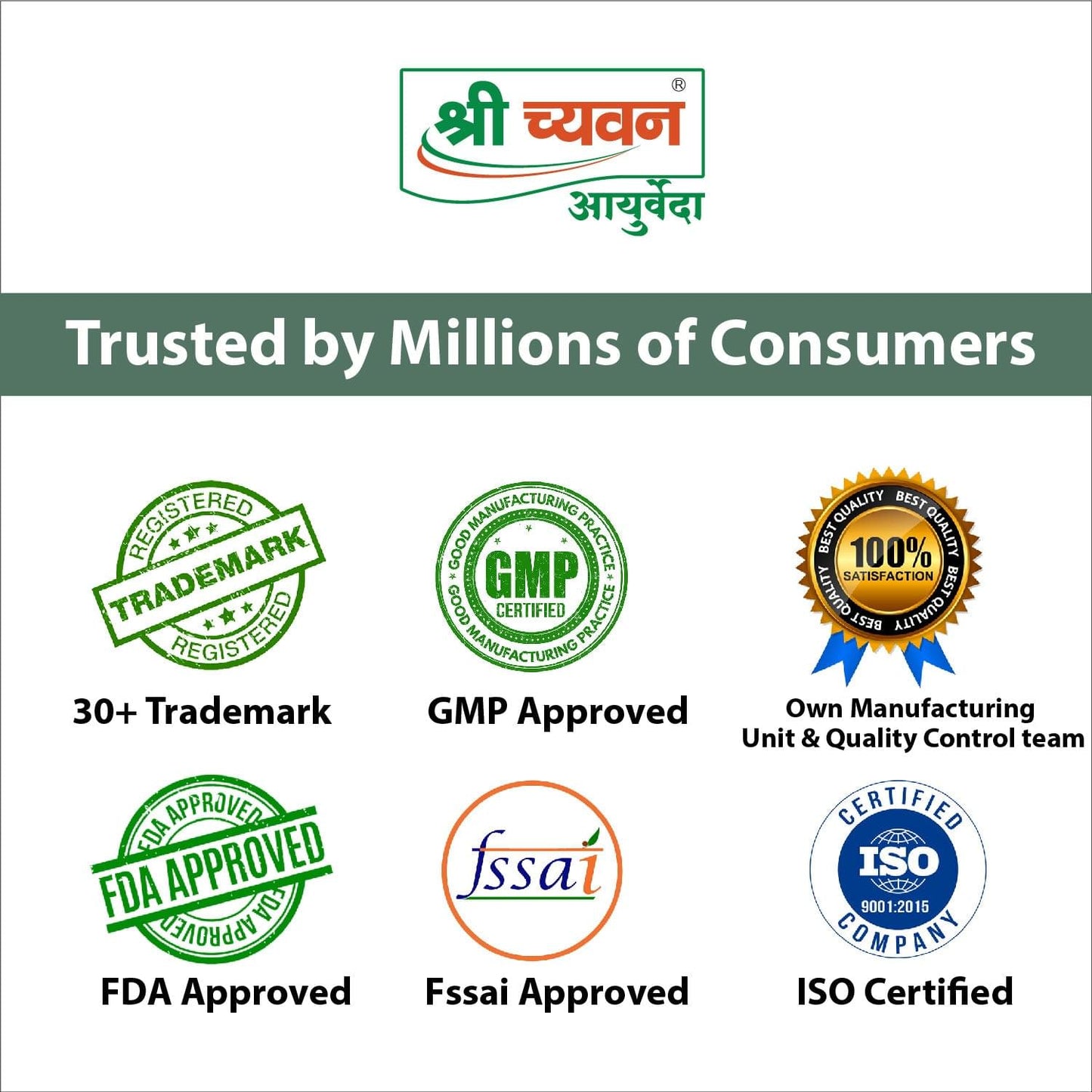In Ayurveda, the condition commonly known as "Leucoderma" is referred to as "Shvitra" or "Vitiligo." According to Ayurveda, Shvitra is considered a disorder of the skin pigment called "melanin." It is believed to result from an imbalance of the doshas, primarily Pitta and Kapha.
Ayurveda views Shvitra as a complex condition that involves both superficial and deeper imbalances in the body. Ayurvedic texts describe several causative factors for Shvitra, including excessive intake of sour, salty, and fermented foods, incompatible food combinations, excessive sun exposure, stress, genetic factors, and impaired liver function.
According to Ayurvedic principles, the treatment of Shvitra focuses on balancing the doshas, purifying the blood, and rejuvenating the skin.
In Ayurveda, Leucoderma, also known as vitiligo or Shvitra, is believed to be primarily caused by the imbalance of Pitta dosha. Pitta dosha represents the elements of fire and water and governs metabolic processes in the body. When Pitta dosha becomes aggravated or imbalanced, it can affect the melanocytes, the cells responsible for producing the pigment melanin, resulting in the depigmentation seen in Leucoderma.
However, it's important to note that the involvement of other doshas, particularly Kapha and Vata, is also considered in the Ayurvedic understanding of Leucoderma. Imbalances in these doshas may contribute to the underlying factors that lead to the development of the condition.
Based on the dosha imbalances involved, Ayurvedic treatments for Leucoderma aim to restore the balance of the doshas and promote healthy skin.
Here's a general overview of the dosha-specific approach to Leucoderma:
- Pitta Imbalance: To address Pitta dosha imbalance, the focus is on cooling and soothing therapies. This may include the use of Pitta-pacifying herbs and formulations, such as Neem (Azadirachta indica), Aloe vera, Guduchi (Tinospora cordifolia), and Amalaki (Indian gooseberry). Dietary recommendations may involve avoiding spicy, sour, and hot foods, while favoring cooling and hydrating foods.
- Kapha Imbalance: If Kapha dosha is involved, the emphasis is on stimulating metabolism and promoting detoxification. This may involve the use of Kapha-reducing herbs like Trikatu (a blend of ginger, black pepper, and long pepper) and Triphala (a combination of Amalaki, Bibhitaki, and Haritaki). Dietary suggestions may include reducing heavy, oily, and sweet foods, while favoring light and warm foods.
- Vata Imbalance: Vata dosha may contribute to the progression or aggravation of leucoderma. Balancing Vata dosha is essential to prevent further complications. Measures to stabilize Vata may include gentle and nourishing therapies, such as regular oil massages with Vata-pacifying oils like sesame oil, etc. It is also important to maintain a regular routine, get adequate rest, and practice stress management techniques.
It's important to remember that Ayurvedic treatments are personalized according to an individual's unique constitution and imbalances.
Leucoderma, also known as vitiligo, is characterized by the presence of white patches on skin. The symptoms of Leucoderma can vary from person to person, but the most common signs and symptoms include:
- Depigmented Patches: The primary symptom of Leucoderma is the appearance of milky white or pale patches on the skin. These patches may vary in size and shape, and they can occur anywhere on the body, including the face, hands, feet, arms, legs, and genital area.
- Loss of Skin Color: The patches of depigmented skin lack melanin, the pigment responsible for giving color to the skin, hair, and eyes. As a result, the affected areas appear lighter or white compared to the surrounding skin.
- Symmetrical Distribution: In many cases, the patches of Leucoderma are symmetrical, meaning they occur on both sides of the body in a corresponding pattern. For example, if a patch is present on the left elbow, a similar patch may be present on the right elbow.
- Border Definition: The edges of the depigmented patches are often well-defined, with a clear border separating the affected skin from the normally pigmented skin.
- Spreading or Enlargement: Leucoderma patches may spread gradually over time, enlarging in size and merging with adjacent patches. The rate and extent of spreading can vary between individuals.
- Sensitivity to Sunlight: The depigmented areas of skin in Leucoderma are more susceptible to sunburn and sun damage. They tend to be more sensitive to sunlight and may burn easily, leading to discomfort or pain.
- Premature Greying of Hair: In some cases, individuals with Leucoderma may experience premature greying of hair on the scalp, eyebrows, eyelashes, or other affected areas.
It's important to note that Leucoderma does not cause any physical pain, itching, or irritation. However, the psychological impact of the condition can be significant, as it can affect a person's self-esteem and body image.
Leucoderma Care Kit by Shri Chyawan Ayurveda:
Shri Chyawan Ayurveda have carefully formulated a Vitiligo treatment in Ayurveda - Leucoderma Care Kit to completely cure Leucoderma, white patches, skin discoloration, pigmentation, itching, inflammation, rashes and redness. They have cured thousands of customers till now and have given 100% results.
What is in the Shri Chyawan Leucoderma Care Kit?
The Shri Chyawan Leucoderma kit contains three types of medicine:
- Leuko-out Lep
- Leuko-out Vati
- Leuko-out Churn
Products Benefits:
Leuko-out Lep: Shri Chyawan Ayurveda's Leuko-out lep helps to recover the skin cell and remove all the dead cells.
Leuko-out Vati: Shri Chyawan Ayurveda's Leuko-out vati is a tablet that helps to boost immunity and reduce the dead cell. It’s also helps in all skin related disease.
Leuko-out Churn: Shri Chyawan Ayurveda's Leuko-out churn helps in the detoxification of the body and remove harmful toxins.
Product Ingredients:
- The main Ingredients in Leuko-out Lep are Bakuchi, Boileem, Ark, Chharota Seed, Dhatura, Giloy, Gold Ash, Swarn Jata, Aloe Vera.
- The main ingredients in Leuko-out Vati are Amla, Giloy, Aloe vera, Kiwi, Daru Haldi, Swarn Jata, Bhasm, Ark, Jangali bel etc.
- The main ingredients in Leuko-out Churn are Bakuchi, Daru Haldi, Nagar Motha, Arjun Chhal, Tulsi, Swarn Bhasm etc.
HOW TO USE:
Leuko-out Vati – One tablet empty stomach twice a day i.e., morning and evening as directed by the physician.
Leuko-out Churn – One teaspoon of the churn with lukewarm water.
Leuko-out Lep – The Lep should be applied for at least 2 hours on the body.
Note - Do not use Leucoderma Care Kit if Diabetic or Pregnant.
